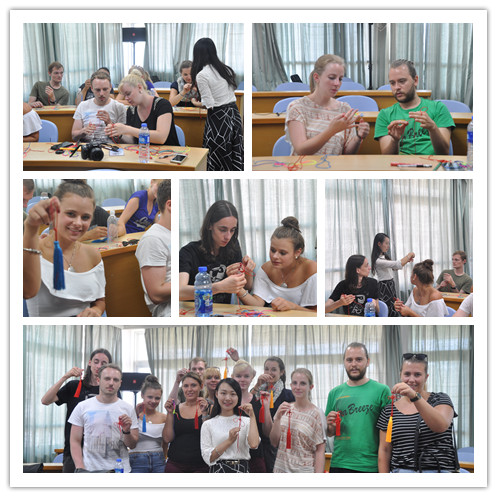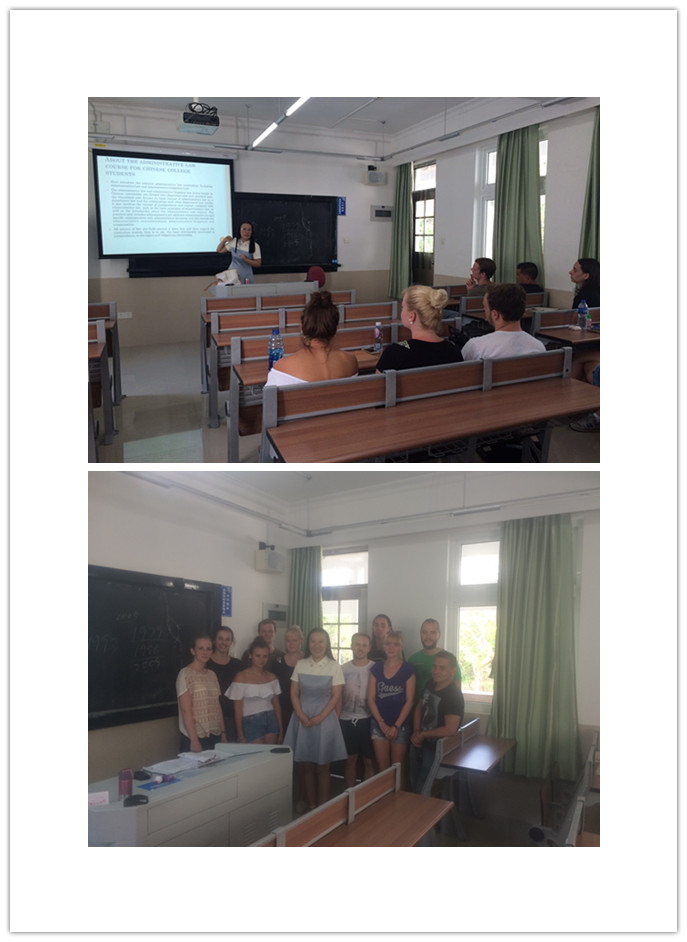The students from Trier University learned how to make Chinese konts.At the beginning,the teacher introduced the history of Chinese knots:Chinese knots begun in ancient times when people mended clothes and knot, the purpose of knot was to keep a record.And then people gradually added some aesthetic values.Knots were used to tie to a seal,a bronze mirror or a jade pendant.The teacher then explained the meaning of different kinds of konts, for instance, reunion konts mean reunion and perfection,safety knots mean having a safe life all year round,panchang knots mean eternal immortal,fuzi knots mean full of blessings,double butterflies konts mean a happy couple.
Then ,the students begun to learn how to make Chinese konts.At first, the students try the two strings knots.The teacher described it and showed it , however, the steps were so complicated that the tacher teach them one by one.Thanks to the help of the teacher, some students finished their work and became joyful.Second, the students tried the Ping Jie which needed two people to help each other.This kind of knots wasn’t difficult so nearly all the students finished.The last one was the most difficult one which needed to put on the table and folded, crossd, the students should be patient and determined.After the teacher had shown once, she begun to teach the students one by one.Each students listened to the teacher carefully and did their best to make it and adjust it.Everything comes to him who waits, every students had a bright smile on their face when they appreciated their works.
After two and a half hours’ making, the students have learned three ways of making Chinese knots and the lesson ended in a satisfactory way.

If you ask a Germany student about his view on Chinese Constitution law and administrative law, he may find this question hard to answer even if he majors in law. Different national conditions decide this area of law differs a lot between two countries. However, after Vice-professor Sun Liyan’s class on Thursday afternoon, these students all felt opening a new door to this question as well as deepened their impression on Chinese law.
At the beginning, Mrs Sun gave a brief introduction about the status of Constitution law and its history as well as The National People’s Congress. Curious to this particular institution, these students asked a series of questions and compared two countries’ different legislature systems, making the class live. Then, Mrs Sun showed a classic case Qu Yuling v. Chen Xiaoqi to show how Constitution law applied to a specific case and why couldn’t be used directly to handle the case too often.
With the discussion goes on, more questions were asked and Mrs Sun answered in detail one by one. What the students especially interested in is the law of Hongkong, Macau and Taiwan. Somehow not familiar to Chinese history, this question is really hard for these students. Mrs Sun carefully explained and the students all knew a lot.
Every class gives these students a new view about Chinese law.Wish they enjoy the next few days in this beautiful school.

Edited by Jin Tingfneg
Pictured by Zhou Zhili